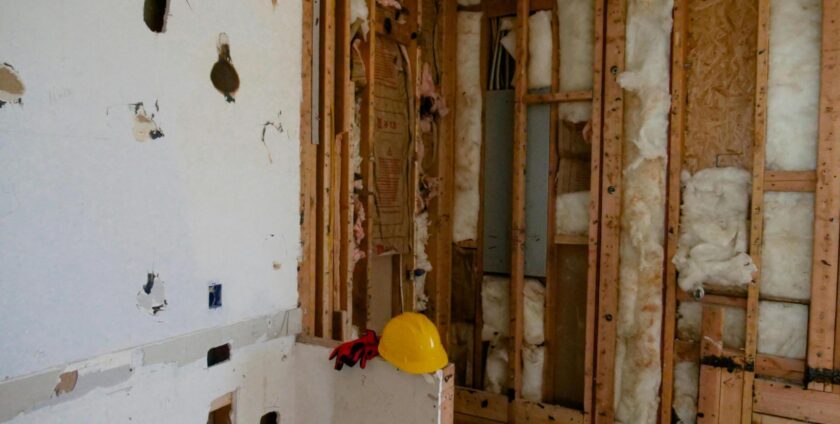
Partition walls are the main way we divide already existing large spaces and rooms. Depending on your design, partition walls can be all sorts of shapes and sizes. In this blog post, we are going to talk mainly about plasterboard partition walls.
What are the main pros and cons of plasterboard partition walls, how do they be constructed, and when are they most suitable? Read below.
What is a plasterboard partition wall?
A plasterboard partition wall is a very lightweight construction that serves the purpose of dividing a space. Sometimes you will see it online with the name partition wall.
This type of divider is constructed only with plasterboard attached to a lightweight frame made from wood or metal. It is also a very fast and efficient way to create a new room in your home.
Plasterboard is used only for dividing rooms, without having any structural purpose. If you need one installed in your home or business space, you can take on a DIY project or call a professional plasterboard installation service.
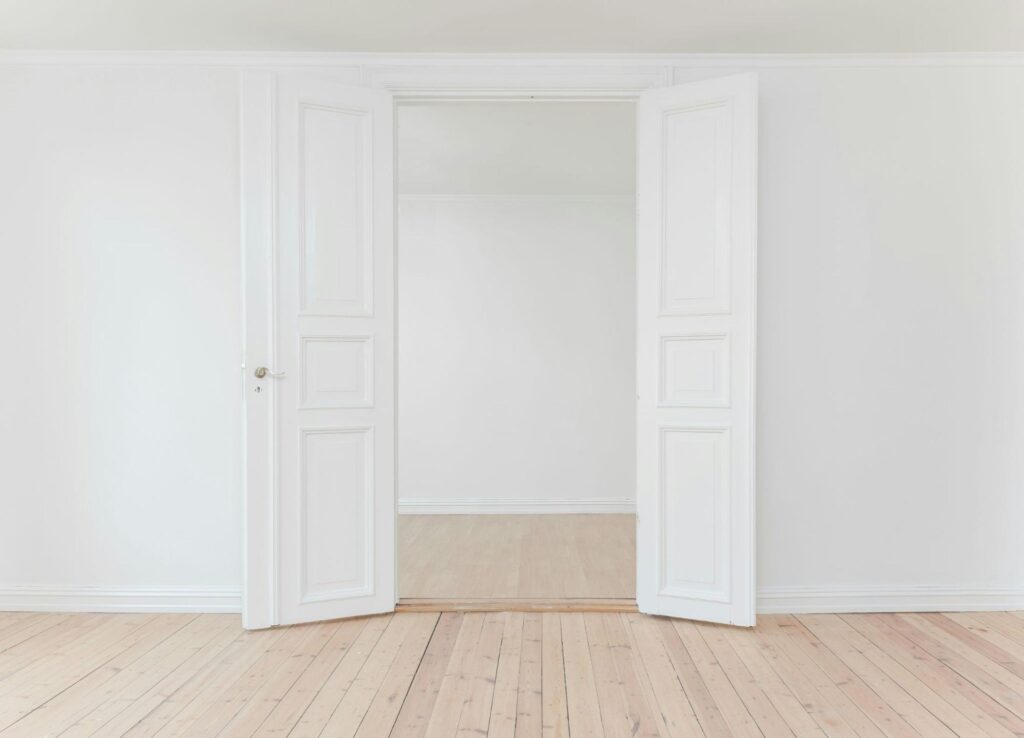
Versatility and advantages
Because the plasterboard partition wall is very lightweight, it can be positioned virtually anywhere in the home. You can even construct a half wall by just marking the space with the divider. It all depends on your preference.
The other key advantage is that plasterboard partition walls are very cheap and easy to construct. They are a great DIY project, and you don’t need very serious skills to construct one.
Commercial applications
Plasterboard partition walls are used in all sorts of commercial spaces. They are especially popular in office buildings, where they are used to make cubicles and office partitions.
In all sorts of stores – both malls and retail – plasterboard partition walls are used as a cost-effective way to divide the space. The main pro for places like this is that this type of partition wall is easily customizable, it can be moved frequently and costs virtually nothing when compared to traditional construction.
They are especially popular in galleries and event spaces. That’s because they’re easy and fast construction can make the space cater better to the artists. It’s also often used in hospitals, again because it’s an easy way to divide space.
Residential applications
The use of plasterboard partition walls is very popular for residential buildings. Lots of homeowners even put this type of partition wall themselves because it doesn’t require a lot of hard work or very specific and complicated skills.
Its primary use is again to divide the space, especially in open-plan homes. Some homeowners don’t like the living space to be in just one room, so the cheapest and easiest way to create additional leisure areas is with the use of plasterboard partition walls.
The main benefit is that if you decide you no longer like the divider, you can easily remove it from your house.
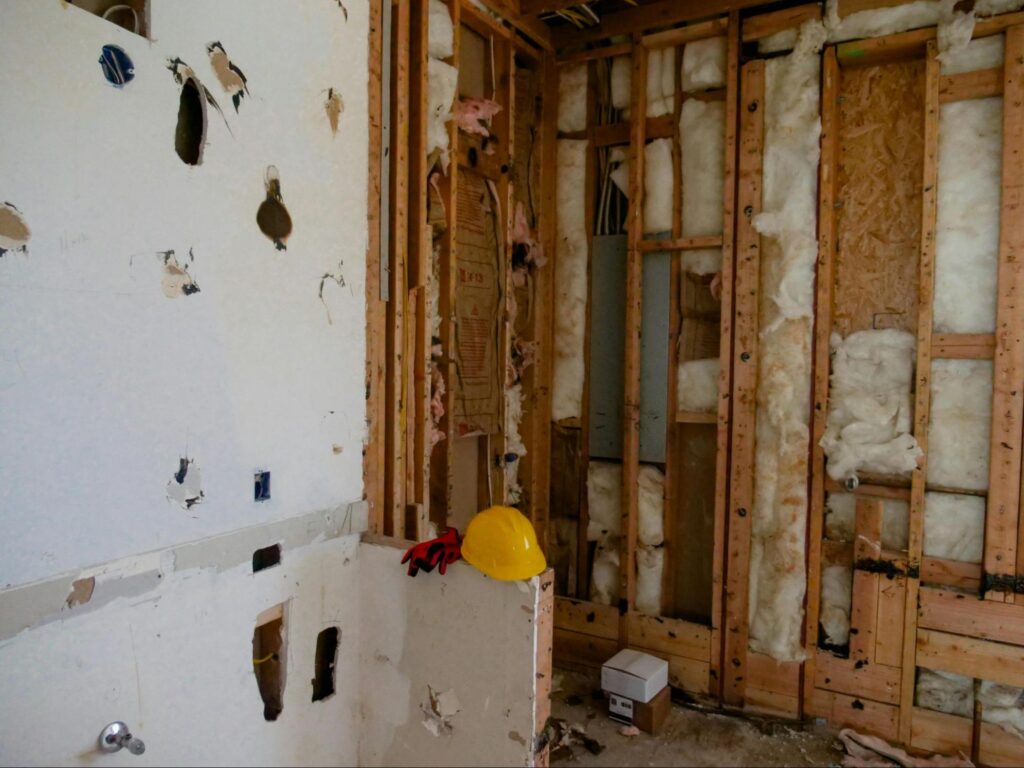
What is a stud partition wall?
Stud partition walls serve not only a dividing function but also a structural one. They can be an integral part of your home.
A stud wall frame is made with a vertical and horizontal construction to make it sturdier. This type of wall is load-bearing to construction, and stability is key.
Depending on the materials used, a stud wall can bear some amount of weight and can be used as a structural wall in certain cases. The stud wall is also heavier and more durable when compared to other partition walls. It can’t be easily moved.
What are the main parts?
While the plasterboard partition wall is constructed only from a lightweight wood or metal frame, stud walls have additional elements that give them more support.
A stud wall is constructed from vertical pieces of wood called studs and horizontal ones called noggins. The purpose of those is to give the wall structural strength and load-bearing properties. All the stud spacing is in regular intervals from one another to additionally strengthen the construction.
When constructing any type of partition wall, you should add floor plates and ceiling plates to guide the wall.
After the initial construction is ready, the stud wall is then insulated inside, and plasterboard slabs are added to the construction to create a smooth wall surface.
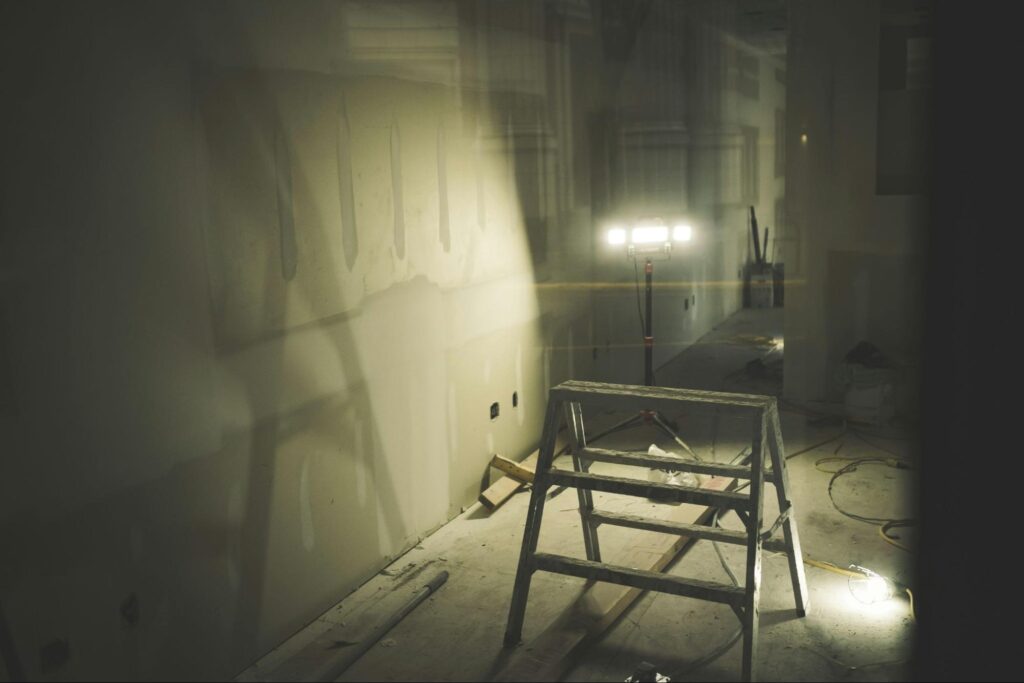
What is the difference between a stud wall and a partition wall?
One common mistake is to think that stud wall partitions and plasterboard partition walls are the same thing, but in reality, they serve a different purpose.
While plasterboard walls only divide the space, stud walls also have a construction function. They can be load-bearing and are made with a heavier and sturdier frame. Plasterboard walls are non load bearing.
The frame can be constructed with metal or wood and it often has horizontal pieces to enhance the durability and strength of the wall.
Is drywall the same as partition wall?
Drywall is the material that goes into different partition walls to create a smooth wall finish.
Drywall by itself can’t be used as any sort of partition wall, because it lacks the strength and durability when it doesn’t have a frame.
For both plasterboard walls and stud walls, drywall is used as the finishing material that essentially gives you the wall surface. It’s easy to work with, it can be plastered and painted over, and it’s easy to maintain in the long run.
Drywall is especially popular when constructing bathrooms because it gives a level and even surface on which to lay tiles.
How thick is a plasterboard partition wall?
A plasterboard partition wall can vary in width depending on the use and framing.
Here are the main components that influence the thickness of the wall:
- Framing: Metal and wood framing for plasterboard partition walls vary in size and shape. This influences the thickness of the finished wall.
- Insulation and soundproofing: If it’s decided that the plasterboard partition wall needs some kind of sound insulation or normal insulation, then that influences the finished wall.
- Drywall plates: A typical drywall plate also adds thickness to the construction, and sometimes, more than one slab is used for the wall.
Considering all the variables, a plasterboard partition wall can be from 90 mm up to 125 mm, depending on the insulation, layers of plasterboard and construction of the frame.
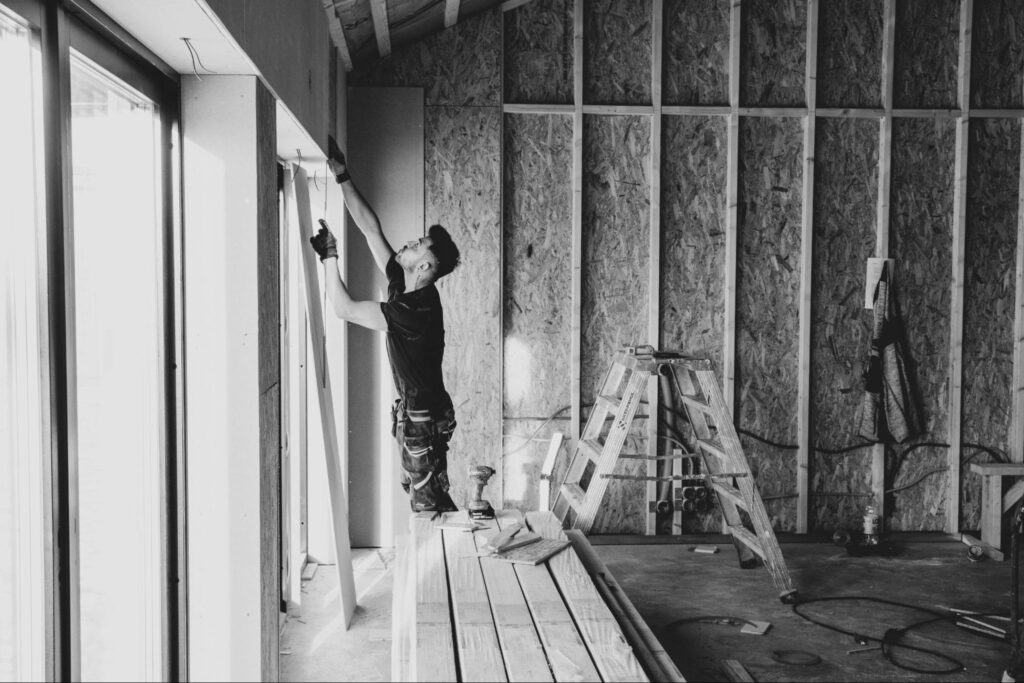
What board should be used for the partition wall?
The type of board for a partition wall is directly connected to where that wall is going to be constructed. There’s a wide variety of drywall types that can be used and all of them serve a different purpose.
When choosing the type of board, you should think about the location, fire safety and soundproofing that you want the wall to provide.
The standard plasterboard is the most common and cheapest choice for homeowners. It’s implemented in partition walls in indoor spaces, and it’s super cost-effective and easy to install.
Our pro tip today is to consider fire resistance for the plasterboard you are going to use. Fire resistant boards are a bit more expensive, but they have special layers of fire resistant materials. They are typically used in commercial buildings to construct emergency exit spaces. For residential buildings, they can be used for garages and corridors.
If you want to construct a partition wall in your bathroom, then you need a moisture-resistant board. It’s easily distinguishable, because its color is green.
Sound-proof plasterboard has an extra layer that absorbs sounds. It’s used in office buildings and hospitals the most.
Impact-resistant plasterboard is also widely used, primarily in spaces where a lot of people gather all at once. It’s extra sturdy, often having a fiberglass core, making it extra durable.
There is also a wide variety of boards used for the construction of an external wall.
For any general use of a partition wall, the standard board is used, because it is the cheapest and easiest to find.
Regulations and specifications
There are a number of building regulations and specifications for plasterboard walls, but they vary depending on where you live and what type of wall you want to build.
Make sure to contact local authorities before adding any partition walls to your home. They give you valuable information on any existing regulations.
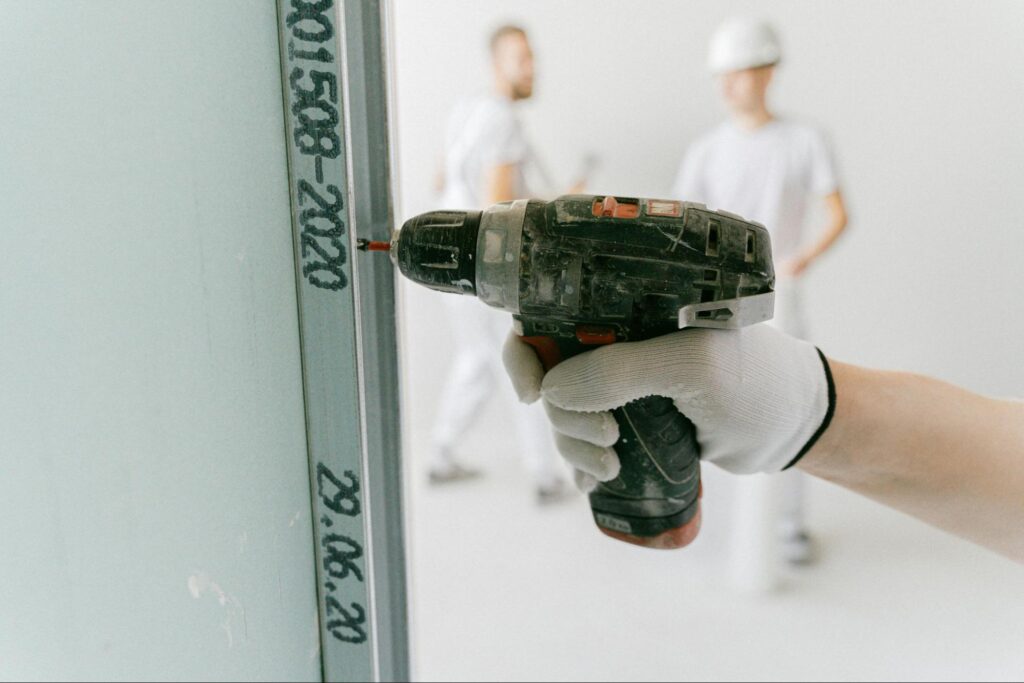
How to build one?
As we said, a plasterboard partition wall is easy to construct and can be done by virtually any homeowner who has the right tools and knowledge.
First, you are going to need materials for your construction project.
After you decide on the type of partition wall you want the location it’s going to be in, you’ll need:
- Drywall sheets
- Studs – based on your project, either metal or timber studs;
- Drywall screws/nails
- Joint tape and joint compound
- Insulation, if you require any.
After you have all the necessary tools and materials, the first thing you’re going to do is to measure everything really well. You have to acknowledge are there any wall plugs, openings or other types of additional design elements that might influence your construction.
Remember – measure twice, cut once! Mark where your wall will be before you even begin constructing it.
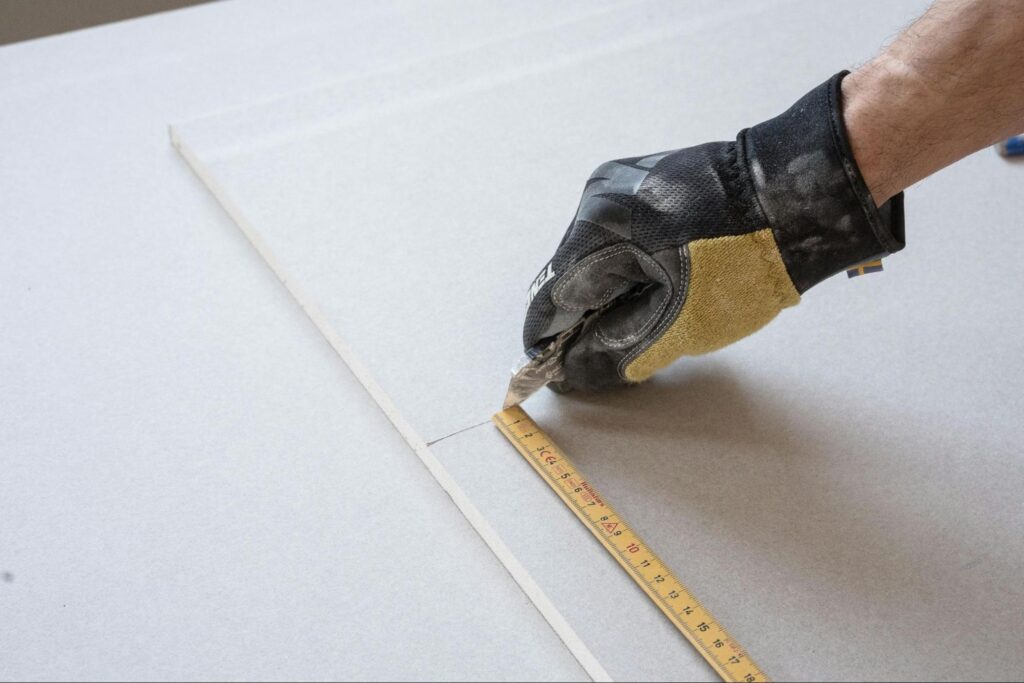
The first thing you’ll need to do is build the frame of the wall:
- Cut tracks for the wall: These are very important construction elements called plates. They will run on the ceiling and floor, so you can construct the frame based on their position.
- Install the plates in their designated places: You should first start with the floor plate and then install the ceiling plate. Make sure they are screwed in. It’s best if you secure them to any existing ceiling joists.
- Add the vertical studs of the wall: You should again measure the space before you cut your studs for the wall. Studs should be attached at regular intervals in the construction frame.
- Frame openings: Some homeowners decide on putting on a window or a door in their partition wall. This opening has to be framed in the initial timber frame of the plasterboard wall.
- Add insulation if needed.
- Install the drywall over the insulation: The wall is almost finished. You need to fix the drywall over the timber or metal frame you have already done. Measure and cut the boards to cover your frame and secure it with screws or nails on both sides of the wall.
- Tape the seams: All seams and joints of the individual drywall sheets have to be invisible, and that’s where the tape and finish come in handy. Make sure you plaster drill holes left from screws and nails.
- Finish the wall: After everything else is done, you can plaster the wall in any style you like and paint over the plaster.
When using metal studs for your construction it’s crucial to have the right tools to cut metal. One other way is to measure everything and have the studs pre-cut for you.
If this process seems difficult to you, you can always call a professional for a plasterboard partition wall. Oftentimes, this is the best decision, because experts work faster and know the materials better.
Conclusion
Plasterboard partition walls are an easy and cheap way to divide a space. They can be of all shapes and sizes, depending on your preference and the wall’s function.
Partition walls can be a very great DIY project and can be done with minimum experience if you follow our step-by-step guide.
Frequently Asked Questions
I need an additional load-bearing wall. Can I make a plasterboard partition wall?
No, you can’t. Plasterboard partition walls are not load-bearing. The better choice is a stud wall because it has a sturdier construction.
Can I make a partition wall using drywall only?
No, you can’t. Drywall by itself is not a good choice. You need to add metal or wood framing to the construction to make sure that the wall is going to last.
Can I install a bookcase on the partition wall?
Yes! If you’re adding any type of openings to the partition wall, make sure that they are framed in the initial construction.

